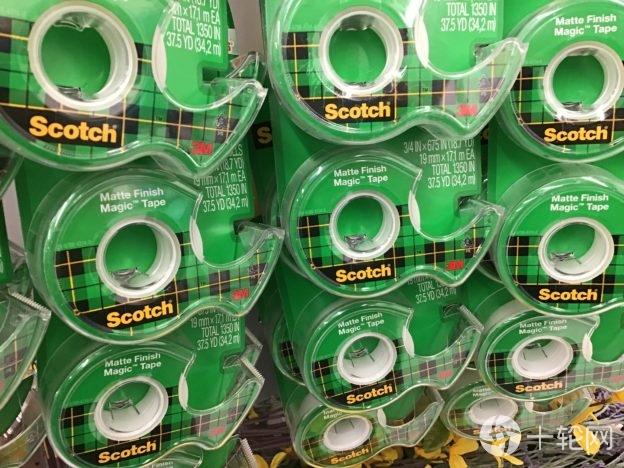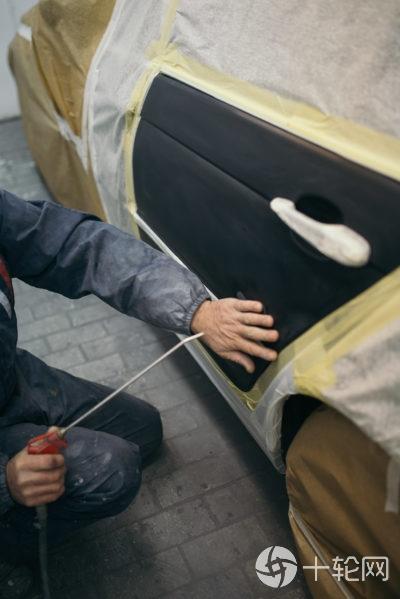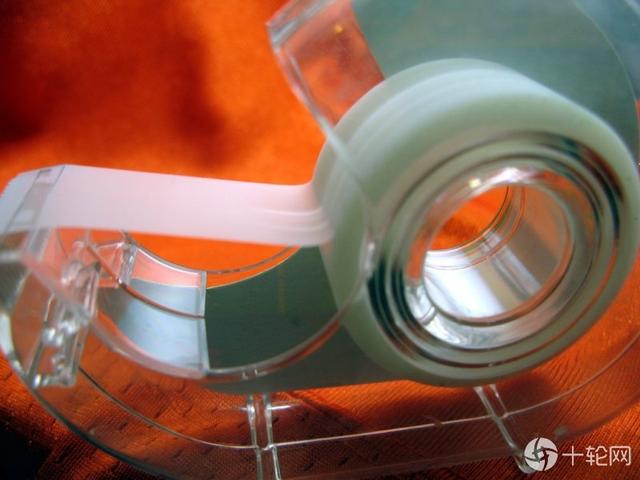Scotch tape is probably one of the most versatile inventions in human history. Toys, pages, and banknotes are all on the rescue list. The most amazing even the cracks in the egg shells of pigeons can be rescued. Finally, they even successfully hatched the pigeons. Behind this “old thing savior”, there is also a wonderful story.

The starting point of tape life
Richard Drew was born in Minnesota in the United States and is a student at the local University of Minnesota.
3M, the only company he has lived in his life, recruited him into the company after he finished his studies, and also launched his “tape life”.
From sandpaper to tape
At that time, Drew’s main business was to send 3M’s sandpaper products to the car factory for technicians to try. In one of the delivery depots, he saw the difficulties of the paint masters.
The two-tone body design was popular in the 1920s. After the first coat of paint is applied, the newspaper must be glued to the first coat of paint and the area to be sprayed with the second coat of paint must be retained before the second color can be sprayed.
However, the process of tearing off the glue of the newspaper often produces a lot of residual glue, which makes the masters very worried. So Drew decided to develop masking tape to solve the troubles of the masters.

A master is preparing to paint the car. The yellow tape on the right side of the picture, attached to the body, was invented by Drew. (Source: Flickr / Ivan RadicCC BY 2.0)
Concentrate on working hours
During the development of the masking tape, Drew was discovered by William McKnight, the company’s director, and was reprimanded by the other party, asking him to concentrate on his work.
Drew did as he did, but he did not give up his research and obtained a patent for shielding tape in 1930.
Take it back to your “Scotland boss”!
The biggest contribution of this shielding tape prototype is to inspire 3M to use the name “Scotch” as the brand name of its tape products.
At that time, Drew visited the master with new tape. Soon after the tape stuck to the body, it came off. When the masters returned the tape to Drew, they said sarcastically: “Take it back and give your” Scotland “boss (note), let him apply more glue!”
Although the effect of Drew’s shielding tape has greatly improved after the improvement, the masters refused to change the word “Scotch”, and let 3M be determined to use “Scotch” as the brand name of the new tape.

After the introduction of Scotch tape, it caught up with the needs of the Great Depression and finally became a successful product. (Source: Flickr / frankieleonCC BY 2.0)
Scotch tape, see above!
In the same year, Drew developed a “waterproof transparent tape” after improving a company’s sealing tape that was popular with bakeries and grocers.
The tape was then sent to a customer in Chicago, waiting for a response.
Get it to market soon!
The customer’s response was very good, and recommended 3M mass production as soon as possible. When 3M started production, there was a person who made a huge contribution to Scotch tape-McKnight, who previously reprimanded Drew for not paying attention to the supervisor.
McKnight saw the potential of Scotch tape, and advocated the use of “savior of old objects” as the main axis of this tape marketing, rather than just a Scotch tape.
Soon after, the Scotch tape was a huge success after it went on the market. Subsequently, a 3M business person, John Borton, invented the tape station to make this Scotch tape more suitable for people’s needs.
The success of Scotch tape, in addition to McKnight’s smart eyes, also has to attribute to the opportunities given to 3M by the times.
When the Great Depression happened in 1929, the US stock market plummeted, causing people to panic. Scotch tape coincided with the Great Depression when it was launched, and the marketing line of “Old Things Saver” was welcomed by the public at that time, and sales volume surged. The picture shows the scene of Wall Street at that time. (Source: US-gov / Public domain)
Savior of the Great Depression
When Scotch tape went on the market, it coincided with the Great Depression, McNair’s specific key marketing axis also successfully made Scotch tape popular in the United States.
Scotch tape is used in a variety of ways, pasting damaged pages, banknotes, and repairing toys. Some people even put transparent tape on the cracks of the egg shells of pigeon eggs and turkey eggs, and finally succeeded in hatching the young birds in the eggs.
The emergence of 3M tape station also allows people to quickly find the tape head to meet the needs of use. At this point, the “Scotch Scotch Tape” in people’s impression was officially completed.

In addition to inventing Scotch tape, Drew also unexpectedly inspired Chairman McKnight to set up a 15% system to allow employees to use 15% of their work time to study their areas of interest. (Source: Unsplash)
15% principle
Drew invented a variety of tapes throughout his life, and retired in 1962. He died in 1980. In 2007, he won the honor of entering the National Inventors Hall of Fame.
In addition, he also unexpectedly inspired an important management system in the history of 3M: the 15% principle.

It turned out that McKnight, who reprimanded him at that time, eventually became the chairman of 3M. His work experience with Drew made him realize the importance of giving employees freedom, so he introduced a 15% system that allows employees to use 15% of their work time Interested projects.
He once said: “If you fence around people, you will only get a flock of sheep, (inferior to) giving people the space they need.”
This principle was eventually adopted by technology companies such as Google and became a well-known corporate management system.
Note: At that time, people did not have a good impression of “scotch” and thought they were stingy, so the workers used this irony to cut corners of the tape developed by Drew.
Shenzhen World Packing Industrial Ltd
Stretch Film & Packing Tape Specialist , Top China manufacturer
Contact us & let’s make Win-Win business, always stable quality stretch film, save you time & cost. : )

